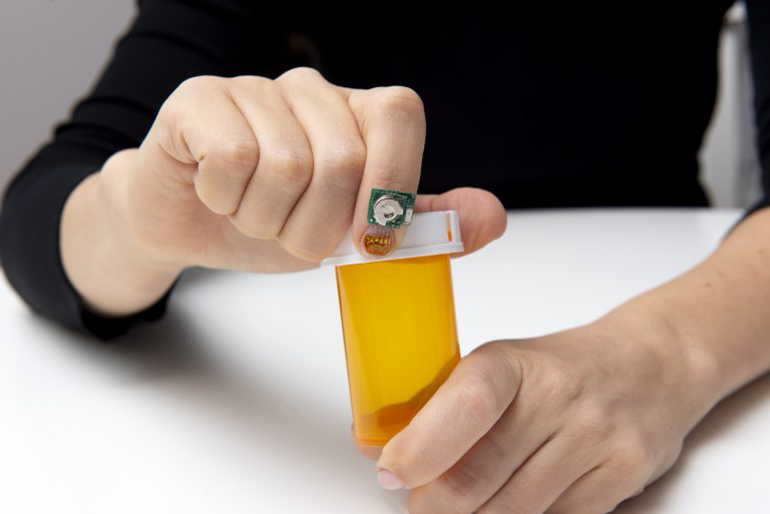The strength of grip is a useful metric for monitoring diseases. Grip strength has been linked with the effectiveness of medication in people with Parkinson’s disease, the degree of cognitive function in schizophrenics, the condition of one’s cardiovascular health, and all-cause mortality in geriatrics. With that in mind, researchers at IBM have developed a first-of-a-kind “fingernail sensor” prototype to help monitor human health.
Read more Which Data are Worth Collecting Through Wearable Sensors for Parkinson’s Disease Symptoms
The wearable, wireless device continuously, reported in the journal Scientific Reports, measures how a person’s fingernail bends and moves, which is a key indicator of grip strength, reports IBM.
The IBM researchers were originally interested in creating a device to help monitor patients with Parkinson’s disease, as changes in a medication regimen should normally be accounted by changes in symptoms.
Skin-based sensors are suitable for helping capture things like motion, muscle health and nerve cells. They can also reflect the intensity of a person’s emotional state, but with older patients, these can often cause problems, including infections.
This is where the potential of a fingernail sensor comes into play. Since we interact with objects using tactile sensing of pressure, surface textures, temperature, and more, the researchers thought it might be possible to obtain signals from how our fingernail bends throughout the day, and employ artificial intelligence and machine learning to analyze that data.
The new device has a dynamometer inside that detects finger motion, and using artificial intelligence, it collects accelerometer data and communicates with a smartwatch.
Read more Consensus Orthopedics Partners Up with IBM Watson Health to Develop Wearable TracPatch
“Since nails are so tough, we decided to glue a sensor system to a fingernail without worrying about any of the issues associated with attaching to skin. Our dynamometer experiments demonstrated we could extract a consistent enough signal from the nail to give good grip force prediction in a variety of grip types,” wrote the researchers.













